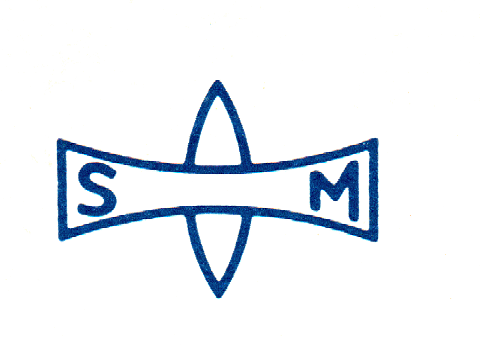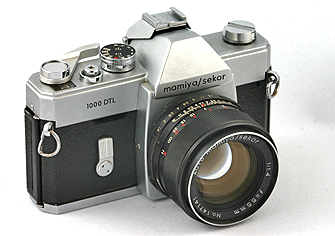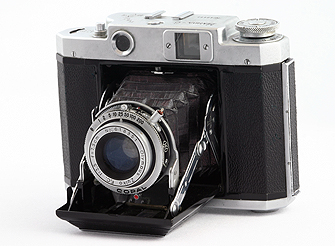| This site last updated on 02/05/05 |
| Saved from 50 megs
dot com - site is unstable, images are missing on that site This took 3 days to get all the images together, fix the links and remove old links. Some images from "Way Back Machine" Manuals for Mamiya 35mm at www.butkus.us |
What's New
About Me
Rangefinders
Prismat
Fixed Lens
SLR
TL & DTL
XTL &
X-1000
MSX & DSX
NC-1000
Z-Series
Other
Mamiya 35mm
Instruction
Manual
Reprints
Related
Links
(most were not
working - deleted)
Mamiya
35mm Camera
Auction
Prices
Mamiya
SLR Lenses
Auction
Prices
The Rest
of My
Collection
FAQ
Survey
Mamiya 35mm
Forum!
Via Way Back
Machine
Welcome Mamiya Collectors!
The Purpose of This Site
This site began in mid-October 2000 from
my personal interest in Mamiya 35mm cameras.
Almost twenty years
after they ceased manufacture of their last 35mm model, Mamiya USA could not answer my inquiries about
their old 35mm camera line. They simply didn't have the references available
any more. Unable to find any other dependable information sources, online
or otherwise, I finally realized my own collecting had provided a great
deal of data about these cameras that many other people might find interesting.
This web site is my attempt to share it with you. However, since
I can't claim to know everything about these cameras, I also depend on each
Gentle Reader to share what information they may have, and you have all
been terrific!
Of one thing
I am certain. You will find Mamiya 35mm camera information on this site
that you will not find anywhere else, not even from Mamiya Corporation!
A Little Mamiya History

Tsunejiro Sugawara (left) and Seichi Mamiya
(right); c. May 1940.
The Mamiya company, which is still
a strong player in the medium-format professional market, was founded in
May 1940 by businessman Tsunejiro Sugawara and engineer Seichi Mamiya (pronounced
ma-MEE-yah; above, right), as Mamiya Koki Seisakusho.
The
stylized symbol (below), seen on early Mamiya cameras, was designed in July
1940 by students of Japan Fine Arts School (the predecessor to the Japan
Art College), and stands for the initials of the two founders (and not Mamiya/Sekor,
as some have reported).

Their first product was the medium-format (120 film) folder Mamiya-6
(pictured, above right). A fascinating feature of this vintage folder is
the way it focuses. The lens and bellows do not move - the film plane does!
Well made and highly successful, it was the predecessor of Mamiya's first
35mm camera, the Mamiya 35-I, which debuted in 1949.
Unfortunately,
Mamiya's Tokyo facilities were destroyed during WWII, and Mamiya had to
rebuild the entire company. Their first postwar cameras were sold entirely
to Allied Forces personnel, not to the Japanese public.
In 1950,
the company was incorporated as the Mamiya Camera Company, Ltd. In February,
1953, a Mamiya USA branch was opened in New York, and in May, 1956, Mamiya
exhibited cameras for the first time at the Photokina Show. Mamiya went
on to make major technological advances in the science of photography, making
popular equipment in both the 35mm and medium-format professional market.
The year 1984 brought the untimely bancruptcy of Osawa Precision
Co. (formerly Bell & Howell Japan), Mamiya's major international distributor.
It was, at the time, the largest financial failure in modern Japanese history.
It also caused severe financial difficulties for Mamiya and led to the unfortunate
end of their 35mm camera production. Osawa itself eventually recovered,
but not before Mamiya had already shifted its entire marketing priority
into the medium-format camera market.
More Mamiya History
Immediately following WWII, shutters and lenses
were in such short supply manufacturers began to make their own to meet
demand. Mamiya, unable to buy a sufficient supply from their former supplier,
Chiyoda, purchased a factory in Setagaya (Tokyo) to manufacture them.
It was the Setagaya factory (later called Setagaya Koki) that originated
the Sekor lens name. For a short time, Mamiya also bought lenses from Olympus
Optical, to whom they sold Koho shutters. Curiously, it was Olympus that
had made and sold Koho to Mamiya before the war.

Mamiya/Sekor 1000 DTL, c. July 1968.

Mamiya-6 Folding Camera (120 film), c. 1940.
Mamiya Camera Pricing
I receive many requests for price quotations
on old Mamiya cameras. So many, I can't always send a personal answer. Besides,
it's a hard question, for two reasons. One, I'm not a camera dealer. I merely
collect these cameras, and that is my only connection point with prices.
Two, I truly believe the value of any older camera has little to do with
book value. It is always the price the buyer and seller agree upon at
any particular moment! That means it can fluctuate wildly! Still, I
have tried to answer your value questions with my
Auction Prices
page.*
* Price references
are derived from "McKeown's Price Guide," © 2001; "McBroom's Camera
Bluebook," © 2000; the "Camprice" online pricing subscription service;
or my own experience. An actual buy-or-sell price could be considerably
different from one listed, and the table should be used only as a benchmark
of the market. Remember too, the interest in old Mamiya 35mm cameras tends
to be from a much narrower range of the collecting market than for cameras
such as Leica or an old Nikon.
 Mamiya
Lens Pricing!
Mamiya
Lens Pricing!
I also receive
many requests for price quotations on just the lenses for Mamiya
35mm cameras and, like so much other old Mamiya data, that information was
simply not readily available anywhere. So, I set about to create it -- and
have been recording and compiling average auction prices for Mamiya 35mm
SLR lenses for almost three years. Check out my
Mamiya Lenses Auction Price page!
 Mamiya Instruction Manuals
Mamiya Instruction Manuals
Instruction manuals for old Mamiya 35mm cameras
are increasingly difficult to find. Operating instructions, service manuals,
period articles and references have just not been readily available -- until
now! Quality reprints of many of these hard-to-find manuals are now available
for sale on my
Instruction Manuals
page!
Other Mamiya 35mm
I have compiled as much information as I can
find on the rest of the Mamiya 35mm heritage -- primarily the point-and-shoot
models they created. If you are interested, you check out this new information
on my Other
Mamiya 35mm page!
Mamiya 35mm Rangefinders
Mamiya SLR models have distinctive identities, but their
early rangefinders might not be so familiar. Here is a listing of major
ones, to help you find them:
- Mamiya Rangefinders